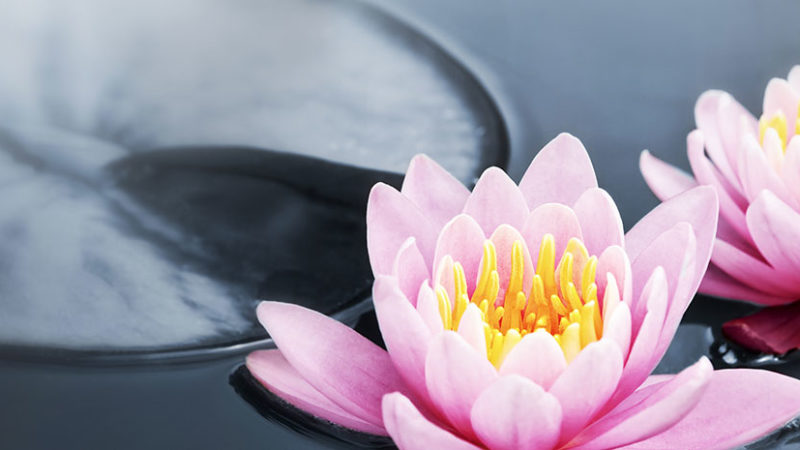Release emotional baggage and reclaim your joy
If you or someone you know suffers from any form of depression—from feeling exhausted or blue to not being able to get out of bed—I am excited to share something with you that can offer a new approach to this huge challenge facing so many people today. Depression happens on a “spectrum” and can have a huge impact on our daily lives. I see depression as the literal depression of self—a side effect of being buried under the sometimes-overwhelming thing called “life.”
In my latest book, How To Heal Yourself From Depression When No One Else Can, I’m bringing my tried-and-true methods to one of the greatest challenges of our time.
My work has helped thousands of people overcome emotional and physical challenges when nothing else has worked. Today I want to share with you one technique that we use in several different ways together in the new book: The Sweep Technique.
The Sweep Technique is a script that you repeat in order to clear subconscious blocks and beliefs. It can be done by simply reading the script out loud or in your head a few times in a row.
The Sweep Script
Even though I have this _______ (describe what you want to release such as “feeling depressed and fatigued”), I acknowledge it’s no longer working for me.
I give my subconscious full permission to help me clear it, from all of my cells in all of my body, permanently and completely.
I am now free to thank it for serving me in the past.
I am now free to release all resistances to letting it go.
I am now free to release all ideas that I need this in order to stay safe.
I am now free to release all ideas that I need it for any reason.
I am now free to release all feelings that I don’t deserve to release it.
I am now free to release all conscious and subconscious causes for this energy.
I am now free to release all conscious and subconscious reasons for holding on to it.
I am now free to release all harmful patterns, emotions, and memories connected to it.
I am now free to release all generational or past-life energies keeping it stuck.
All of my being is healing and clearing this energy now, including any stress response stored in my cells.
Healing, healing, healing. Clearing, clearing, clearing.
It is now time to install _______ (insert a new, healthy energy such as “the energy of moving forward,” “the feeling of being content,” or “the belief that I can feel better now”).
Installing, installing, installing. Installing, installing, installing. And so it is done.
If you’d like to join me for more healing in the new book, I will walk you through using more of this technique, along with others—to release emotional baggage, reconnect with yourself, and reclaim your joy.
Love,
Amy B. Scher
This originally appeared as an author letter by Amy B. Scher, author of How to Heal Yourself From Depression When No One Else Can: A Self-Guided Program to Stop Feeling Like Sh*t.
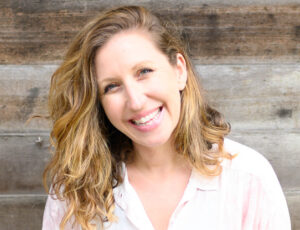
Amy B. Scher is an energy therapist, expert in mind-body healing, and the bestselling author of How to Heal Yourself When No One Else Can and How to Heal Yourself from Anxiety When No One Else Can. She has been featured in the Times of India, CNN, HuffPost, CBS, the Washington Post, Cosmopolitan, the Los Angeles Review of Books, Curve magazine, and San Francisco Book Review. Scher was also named one of the Advocate’s “40 Under 40.” She lives in New York City. For more, visit amybscher.com.
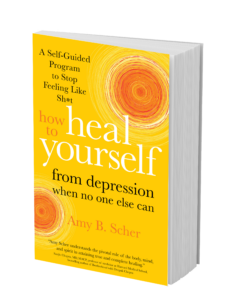
Learn More
Sounds True | Amazon | Barnes & Noble | Indiebound | Bookshop
The Heart Center Meditation
One of the most important aspects of awakening, says Dr. Ann Marie Chiasson, is the opening of the heart. The heart is a floodgate which, when open, enables the world’s great mystical teachings and realizations to pour through.
Here, Ann Marie guides you through a short, heart-centering meditation, which you can practice daily, or anytime you wish to access the mystery and intelligence that is your own heart.
Personal, Interpersonal, Transpersonal
I was recently sitting in the audience of a talk by a spiritual teacher who was pointing out, again and again, the timeless nature of being. Although I could feel the depth and profundity of the eternal moment, at a certain point, I noticed myself feeling contracted and frustrated. I thought to myself, “What about focusing on interpersonal relationships and helping us develop skills for being intimate with other people and communicating well at work, that type of thing? I am sick of timeless being!”
And then I remembered that some people are what could be called “subject matter experts” and everyone can’t be good at everything. And that the way I could benefit the most from this talk was to relax into timelessness and learn from this teacher what he is gifted at transmitting and communicating. Fortunately, that approach worked, and my critical mind relaxed.
However, I also started reflecting on something I read in a book by Robert Augustus Masters. Robert is a new author with Sounds True and has written a new book on Emotional Intimacy, and created a new audio series called Knowing Your Shadow. Robert talks about the “personal, interpersonal, and transpersonal” dimensions of experience. And when I read his description of these three different aspects or dimensions, I just loved it! I notice that whenever people just talk about the “transpersonal”, about what is formless, I begin to long for the personal and interpersonal. And when people just talk about the “personal”, about their challenges and woes, I begin to long for a bigger view that doesn’t place any limits anywhere. Maybe I am just a chronic complainer?
But actually, I think it is more than that. My sense is that the personal, interpersonal, and transpersonal are always all three happening simultaneously. And if we leave any dimension out (in a chronic type of way), we are missing something. And when we include all three — how we are feeling individually, how we are experiencing inter-relating with others, and what it is like to transcend any sense of self and other and experience pure being – then we are experiencing a type of wholeness that leaves nothing out.
So I guess we could say I am happy in wholeness and cranky when transcendence is favored instead of recognized as one dimension of multi-dimensional being. And I feel cranky because I have seen people walk out of these transcendence-focused talks without any clue about how to work with difficult emotional states when they arise (and as we all know, they arise). Teachings that are wholly focused on the transpersonal dimension can be a breeding ground for what Robert Augustus Masters calls “spiritual bypassing” – using our spirituality to avoid facing aspects of our experience, particularly difficult emotional experiences. Robert’s focus is on “emotional literacy”, that we can learn to be fluent with all of our emotions, appreciating their nuances and what is being called forth in us in any given situation. To learn more about Robert’s work, you can check out this two-part podcast I did with him recently on Emotional Intimacy, here and here. Listening to Robert, I felt the opposite of “cranky”; I felt whole.

What Are Nocturnal Meditations?

Many people know about meditating during the day, but few are aware of the “nocturnal meditations.” They’ve been around for thousands of years, tucked away under the blanket of darkness. Until recently, the nocturnal practices have been secret, deemed too subtle for the West. But with the mindfulness revolution in full swing and meditation now in the public domain, these “dark” practices are finally coming to light in the modern world. What surprises most people is how deep and vast these nocturnal meditations are—and how applicable to daily life.
The practices start with lucid dreaming, which is when you wake up to the fact that you’re dreaming while still remaining in the dream. Once it was scientifically proven in 1975, lucid dreaming has gained traction in the West. Initially, lucid dreaming isn’t much of a meditation. Most people use it to indulge their fantasies—to fulfill their wildest dreams in the privacy of their own mind. At this entry level, lucid dreaming is the ultimate in home entertainment, where you become the writer, producer, director, and main actor in an Academy Award-winning production of your own mind.
But the higher levels of lucid dreaming have extraordinary psychological and even physical benefits. You can transform nightmares, rehearse things, resolve interpersonal issues, even improve athletic performance. Neuroscience has shown that you can use your mind to change your brain (neuroplasticity), and modern dream research continues to show that you can use your dreaming mind to enhance a host of daily psychological and physical activities. Lucid dreaming at this higher level is like going to night school.
With some proficiency in lucid
Dream yoga, like lucid dreaming, progresses from beginning to advanced stages. A beginning yogi starts by addressing the question, “What are dreams made of?” They’re made of your mind. So, by working with your dreams at this refined level, you’re working to transform your mind. One early stage of dream yoga involves transforming the objects in your dreams, like changing a dream flower to a dream chair. In so doing, one discovers the malleable nature of mind and the truth of the saying, “Blessed are the flexible, for they are never bent out of shape.” This is the “yoga” or “stretching” part of dream yoga, which develops increased pliability of mind.
One amazing quality of both lucid dreaming and dream yoga is that the benefits of what you do in your dreams don’t stay tucked into the nighttime mind. By changing a flower into a chair in your dreams (not as easy as it sounds!), you realize you can change anger into compassion in your life. In other words, your emotional states are not as solid as you think. They’re essentially as solid as a dream, and therefore as workable.
At higher levels of dream yoga, you use the “example dream” or “double delusion” of the nighttime dream to wake you up from the “real dream” or “primary delusion” of daily life—which is precisely what the Buddha did. You eventually come to the shattering conclusion that this is a dream. When seen properly—when you’re lucid to it—your waking reality is no more concrete than a dream. So a dream yogi lives by the maxim, “This is a dream; I am free; I can change.” It’s a liberating wake-up call, with profound implications for all of life.
For most people, lucid dreaming and dream yoga are enough. But for those wanting to go to “graduate school,” one can advance into sleep yoga (related to yoga nidra in Hinduism). As incredible as it may sound, this is when you learn how to become lucid in deep, dreamless sleep. In Buddhism this is called “luminosity yoga” and adheres to the teaching that fundamentally there is no darkness within—only light unseen. Sleep yoga turns on this nightlight, a luminosity so radiant that it eventually illuminates even the day. Scientists are currently trying to prove this outrageous claim with advanced meditators and dream yogis.
“Lucidity” is a code word for awareness. So, by working with any of these three practices, you’re working to cultivate greater awareness. And what doesn’t benefit with more awareness? All three of these practices engage the principle of bi-directionality, which is all about opening a two-way street between the daytime and nighttime mind. What we do during the day affects how we sleep and dream; and what we do when we sleep and dream affects how we live during the day. By becoming lucid to our dreams and to dreamless sleep, we’re secretly becoming more lucid or aware of our daily lives. So lucid dreaming leads to lucid living.
As fruitful as these three practices are, there is one final step for those wanting to take the deepest dive. With some proficiency in sleep yoga, one can advance into bardo yoga (“gap” yoga), which is when the darkness of sleep is used to prepare for the darkness of death. In Greek mythology, Thanatos (the god of death) and Hypnos (the god of sleep) aren’t just brothers—they’re twins. Death and sleep are intimately related. In Buddhism, death is referred to as “the dream at the end of time.” So bardo yoga, which is a Tibetan contribution, engages the tenet that dreamless means formless, and formless means deathless. Bardo yoga therefore introduces you to your formless/deathless nature—to who you really are. It points out the deepest part of you that doesn’t get old, sick, or die. Bardo yoga is a “dead end” practice that points out eternal life.
We spend a third of our lives in sleep. If you live to be 90, you’ve slept for 30 years. Imagine what you could do if you had even a fraction of that time. We spend 25% of our sleep time in dreams, which adds up to about a month a year. Think of what you could do if you added a month to each year! That’s real “overtime.”
The nocturnal meditations are cutting-edge practices. Neuroscientist Matthew Walker writes, “It is possible that lucid dreamers represent the next iteration in Homo sapiens’ evolution.” How evolutionary does that make lucid sleepers, let alone lucid “die-ers”? Do you want to be the first one on your block to take the lead in evolution? Then open your eyes to the dark, engage the nocturnal meditations, and discover the leading light within.

Andrew Holecek is the author of Dream Yoga: Illuminating Your Life Through Lucid Dreaming and the Tibetan Yogas of Sleep. He is also the founder of Night Club, an online platform that explores the nocturnal meditations and the science that supports them. Learn more about
Mindful Movement: Walking Meditation 101
The Here and Now
What if you could change your life by doing one thing for just ten seconds each day? What if this thing would make you more contented, more grounded, and less stressed?
Welcome to mindfulness.
We spend almost all of our time worrying about two things: what has already happened (the past) and what hasn’t happened yet (the future). This only makes us miserable. The past is over, so there’s nothing we can do about it. And the future isn’t something we should be thinking about right now—unless we’re taking concrete action toward a goal.
Mindfulness breaks us out of this pattern by turning our awareness to the simple moments of life as they happen. We laser in on our senses as we’re experiencing them, and we feel them deeply.
So, the way to “be deep” is to focus on what’s going on right now.
I have two favorite ways to zap into the present moment.
The first way is to briefly tune in to my breath a few times a day. Set an alarm on your watch or phone to go off at three set times during the day. When it goes off, close your eyes and take three deep breaths. Notice how the breath feels as it flows in and out. Let go of whatever else is going on in your mind. Then open your eyes and go back to your day.
The second way is to tune in to the little details of the day. Say you’re picking up a water bottle. Consider this: How does the bottle feel in your hand? Is it heavy or light? When you take a sip of the water, how does it feel on your tongue? Is it cool or warm? What does it taste like? Try this exercise with one small act each day.
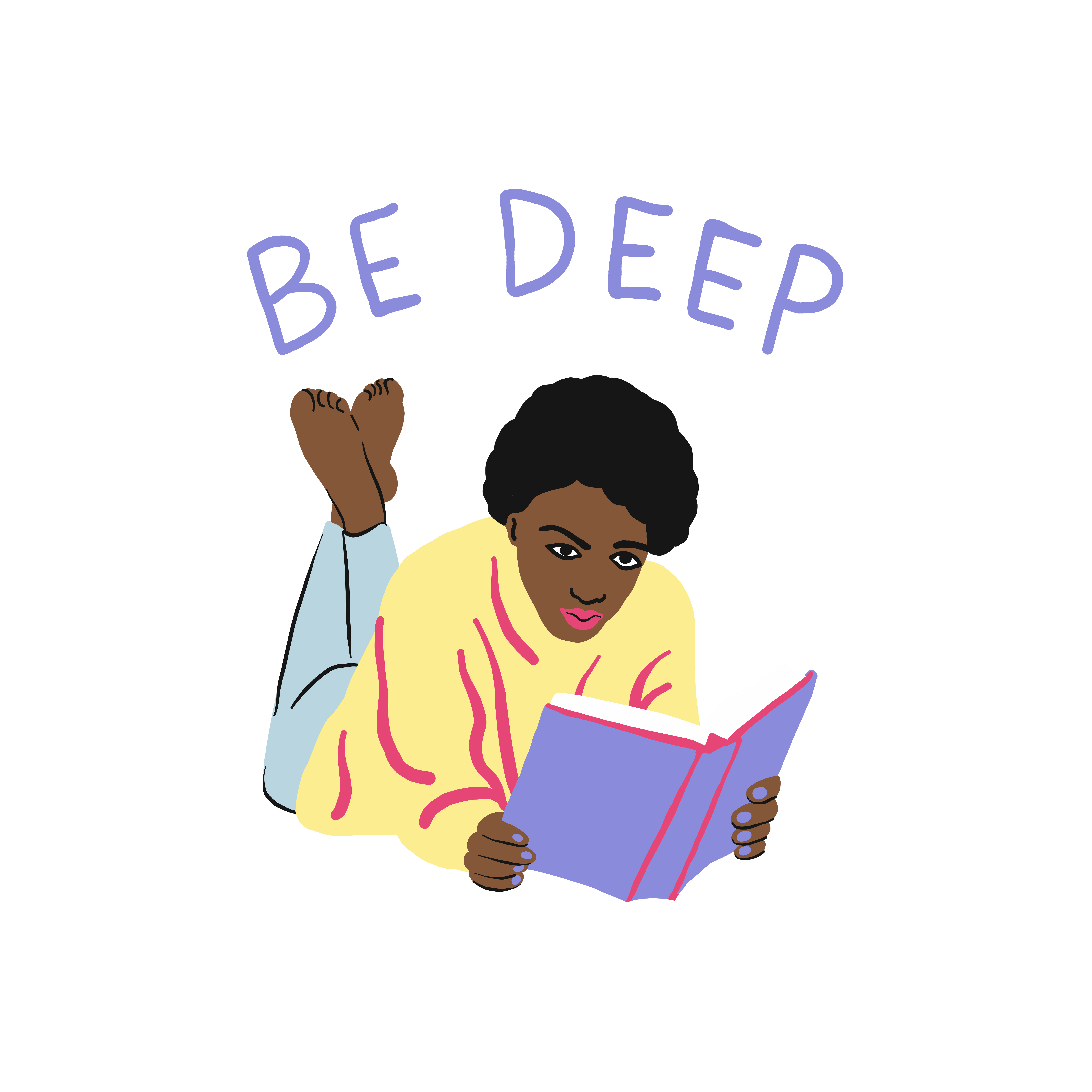 MINDFUL MOVEMENT: Walking Meditation
MINDFUL MOVEMENT: Walking Meditation
Walking meditation is a great way to de-stress and get centered while moving your body and getting some fresh air. It takes only a few minutes, so you can do it almost anywhere.
- The next time you’re walking down the street, start by getting your senses alert. Tune in to the pace of your steps and fall into the rhythm of the steps. What do they sound like?
- Turn your attention to an object you see as you’re walking. It might be a sign, a tree, or a building. Look intently at that object and observe it without labeling it. Just notice it.
- Now turn your attention to the noises that surround you. Don’t label them. Just listen.
- Finally, turn your attention to your breathing. Is it fast and shallow or slow and deep? Take a few deep breaths and continue with your steady pace.
- When you finish your walking meditation, take a minute and pause before reentering your day. Notice the way your body and mind feel. Carry that alertness and presence with you into the rest of your day

This is an excerpt from the chapter “Be Deep” from Whole Girl: Live Vibrantly, Love Your Entire Self, and Make Friends with Food by Sadie Radinsky.
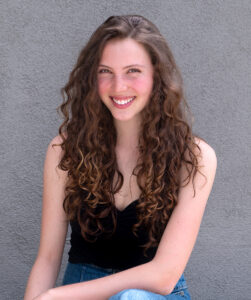 Sadie Radinsky is a 19-year-old blogger and recipe creator. For over six years, she has touched the lives of girls and women worldwide with her award-winning website, wholegirl.com, where she shares paleo treat recipes and advice for living an empowered life. She has published articles and recipes in national magazines and other platforms, including Paleo, Shape, Justine, mindbodygreen, and The Primal Kitchen Cookbook. She lives in the mountains of Los Angeles. For more, visit wholegirl.com.
Sadie Radinsky is a 19-year-old blogger and recipe creator. For over six years, she has touched the lives of girls and women worldwide with her award-winning website, wholegirl.com, where she shares paleo treat recipes and advice for living an empowered life. She has published articles and recipes in national magazines and other platforms, including Paleo, Shape, Justine, mindbodygreen, and The Primal Kitchen Cookbook. She lives in the mountains of Los Angeles. For more, visit wholegirl.com.
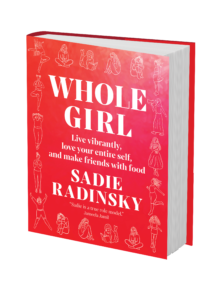 Sounds True | Amazon | Barnes & Noble | Bookshop | Indiebound
Sounds True | Amazon | Barnes & Noble | Bookshop | Indiebound
Guided Meditation: Accepting Your Experience Just as It Is
If you have traveled on the spiritual path even a little way, you have probably come across some version of “love what is”—a reminder that you should accept your experience as it is. However, this teaching easily becomes another injunction. Notice the should in the earlier sentence—it is always a red flag that the judging mind is at work.
The conditioned mind cannot accept unconditionally. It always has an agenda, even if it is well hidden. It secretly bargains and sends the message, “I will accept you [sotto voce] if you change or leave.” This approach is akin to welcoming guests at your front door while secretly hoping they will exit out the back—the sooner, the better! Guests—our unwanted thoughts, feelings, and sensations—will certainly feel this conditional invitation, even if it is unspoken. As a result, they will be much less willing to enter, relax, and reveal themselves. The result? What we resist, persists. So when your new arrivals show up at your door, put away your timer and share some aromatic green tea and a raspberry scone with them. Settle in and let them tell their stories and share their feelings. They just want to be heard and understood. Once they feel genuinely received, they will be open to a new perspective.
Are you willing to be with your experience just as it is, even if it never changes? This is a critically important checking question. Take a few minutes to inquire with the following practice.
MEDITATIVE INQUIRY
Are You Willing to Accept Your Experience Just as It Is?
Sit quietly where you won’t be disturbed, close or lower your eyes, and take a few deep breaths. Feel the weight of your body held by whatever you are sitting on and relax. Feel your attention settling down and in.
Think of a troubling aspect of your conditioning—an unwelcome pattern of behavior, reactive feeling, bodily tension, or invasive thought. Then ask yourself: “Am I willing to accept this just as it is?”
If your response comes from the strategic mind, there will be an honest no. This is good to see. If this is the case, try asking the question a little differently: “Is there something in me that already accepts this just as it is?”
If your attention has settled into the Deep Heart, you will find a yes.
Journey into the depths of your own heart with Dr. John J. Prendergast’s guide, The Deep Heart: Our Portal to Presence.




